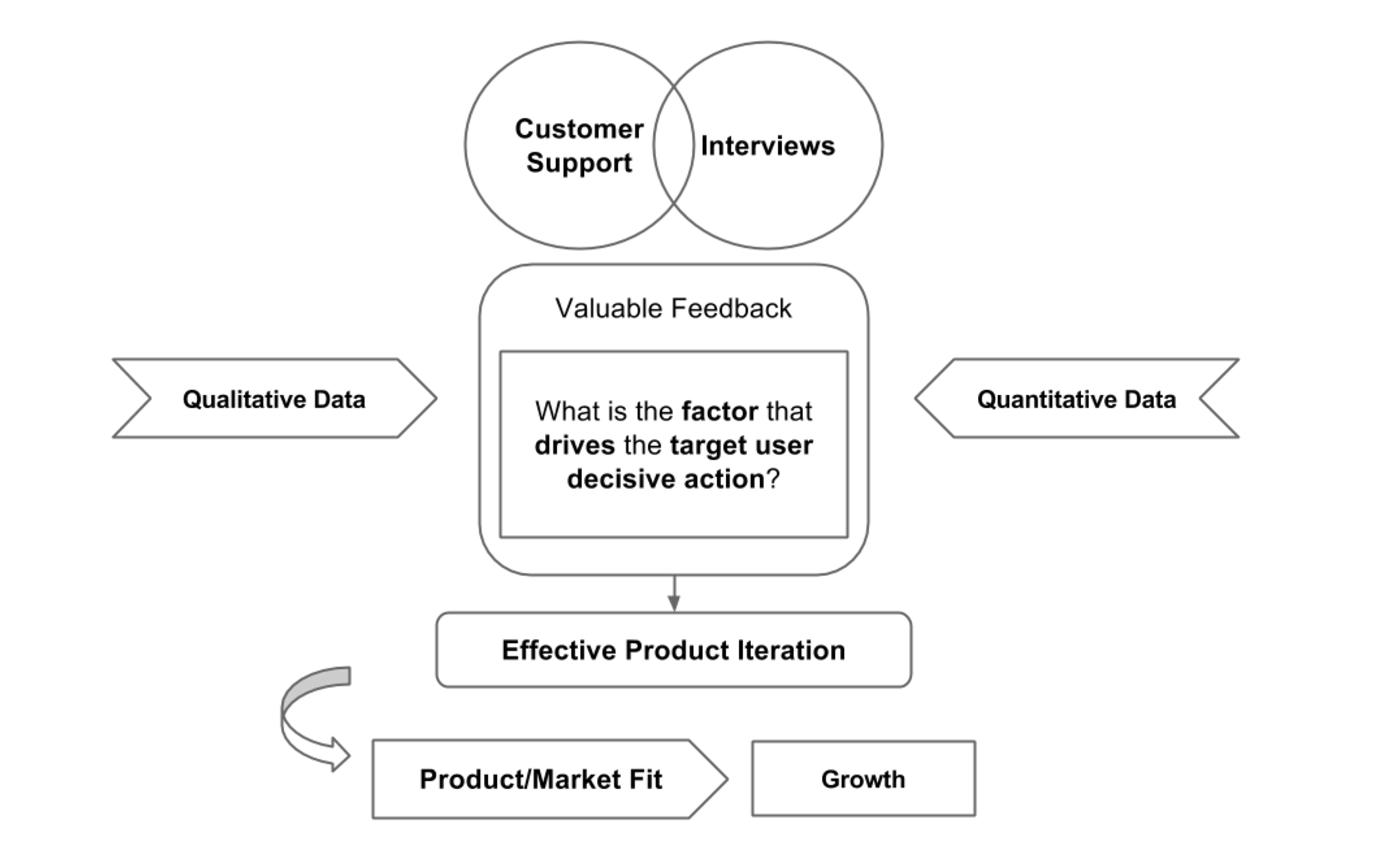Why Customer Support and Product/Market Fit Are Linked
Will your next experiment get you closer to product/market fit? Sure, it may.

Being clever to experiment and iterate on your product is one of the required keys to succeed. Nonetheless, I have seen too many startups under-estimate everything related to customer communication. That’s quite sad as a customer support is very useful to notice when there is a product/market fit and for whom.
Steve Blank would tell you to leave the building, stop digging in your analytics dashboards for a while and go out there to talk with your users. Although face-to-face interviews will provide you with great insights, not everyone has the time to do so on a daily or weekly basis.
However, good customer service will get you a long way towards getting closer to your customers. For instance, setting a chatbox on your website will make it easy for people to reach to you when they have issues, when they have questions or better, when they want to congrats you about your product.
The complaints from your customers scare you? Let me break the good news to you: complaints, issues and questions from your customers are good indicators of Product/Market fit, So, the next time you receive a complaint from one of your users, don’t sweat it! Take it as an opportunity to get the valuable feedback that will allow you to iterate faster on your product. People who do not care about what you are doing, do not complain.
It is the exact reason why you should not fully outsource your customer support, the team building the product needs to stay as close as possible to users. It enables the team to determine the expectations of the core users which will allow once again, effective iteration on the product. Of course, this will translate in better retention and engagement (other key indicators of product/market fit).
Customer support is a learning opportunity that leads to building a product value proposition compatible with the user’s behavior; it is “Support Driven Development” as Kevin Hale, co-founder of Wufoo, calls it.
Whenever, a user reaches to you through customer support you need to follow up with interview type leading questions; obviously after providing him/her with the adequate support. The goal is not to ask the users what features you should add, but rather to understand who is your ideal customer and conclude on his needs. As a wise guy told me once: never make the user a designer but figure out what he needs (which could sometimes be different from what he wants).

There are 4 core questions that will provide you with constructive feedback:

1) How the user discovered the product?
Along with the quantitative data gathered from Google Analytic, this allows you to identify the most prolific acquisition channel to double down on.
2) Does the user understand the product?
Because one of the key roles of a growth hacker is to implement an efficient learning process within the product, it is important to know if the product value proposition is clear enough for your target users.
3) How does the user use the product?
This helps determine the problem that the product is solving. Sometimes people love and use your product to solve a need that the product was not primarily built for; answering this question will let you know when it is right to pivot.
4) Did the user recommend the product to a third party? If so, in which context?
Use Net Promoter Score (NPS) to find out if your ratio of promoters exceeds the ratio of detractors (let’s just say unimpressed customers...), this is a key indicator that there is a need the product is satisfying. It implies that you have reached product/market fit and that it is time for you to capitalize on your existing user base to grow through referral.
But here is a one more thought I want you to keep in mind: To simply implement a chat box will not help you reach product/market fit. Good customer service will only give the insight that will allow you to experiment faster; with faster experiments comes faster product iteration and this is what will help you reach product/market fit.
